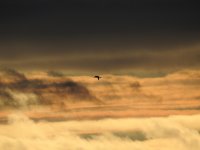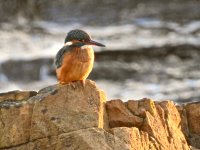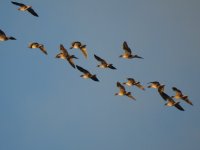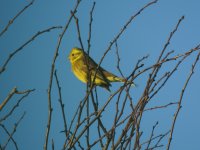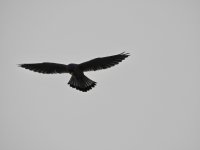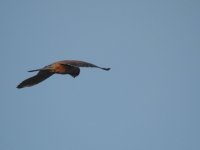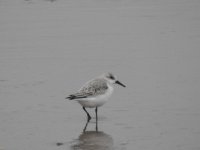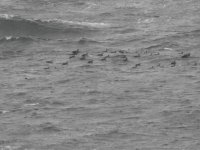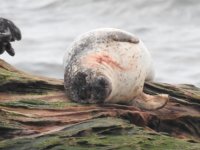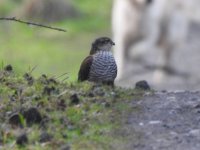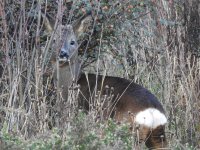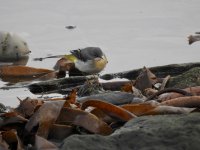An unexpected spot
On Christmas Eve morning, there was no sign of the previous day's Red-Necked Grebe, despite the calm waters of the Forth making for good scanning conditions. There were plenty of regular birds to see however. By the time I had reached the tower, Herring Gull, Carrion Crow, GBBG, Oystercatcher, Eider, Long-Tailed Duck, Redshank, Curlew, BHG, Feral Pigeon, Cormorant, Bar-Tailed Godwit, Magpie, Blackbird, House Sparrow, Starling, Rock Pipit, Goldfinch, Robin, Wren and Long-Tailed Tit had all been seen. After only seeing six species of bird offshore in the previous three weeks, this was a great relief.
Beyond the tower, I walked as far as the top of the zig zag in the path above the Lime Kiln. On this stretch, I added Mallard, Grey Heron, Pink-Footed Goose, Blue Tit, Shag, Woodpigeon and Pheasant were added to the list, before passing the tower on my return to the car park, I added Turnstone.
Later that day, just before the light failed, but in time for the high tide. I made a dash for Seafield to see what I could find on the roosting block in the harbour. Among the Redshank and Turnstone, I was able to locate a few Purple Sandpiper. It was while driving down to Seafield however, that I found my most interesting bird of the day. Pulling up in a queue of traffic at a roundabout, I looked out of my side window, and there in a small tree were about eighteen Waxwing. Nice to see, but too far away from the strip to add them to the list.
Christmas day was not frosty and bright as Christmas Eve had been. Instead is was damp and very gloomy. Following a large Christmas lunch, I excused myself on the pretext that I needed to walk it off. With only an estimated hour of daylight left, it was to be a short walk to the tower and back. I was still hoping for Red-Necked Grebe, but it was not to be. I did make some nice additions to the previous day's list however, with Pied Wagtail, Grey Wagtail, Great Tit, Song Thrush, Chaffinch, Red-Breasted Merganser, Common Gull, Dunnock (strangely missing on the previous day) and Common Scoter. Also seen, was a unseasonal Gannet heading up the Forth.
Today, I headed to the strip just as first light was dawning (08:20 hrs). For a change, I pulled in to the lorry park at the Tiel Burn. Once again, I had R-N Grebe in mind, but the calm waters beyond the sands only carried more common birds. Following a brief scan from the car, I decided to stretch the legs and check out the Tiel Burn itself. It was here that I made a very unexpected spot. As I leant over the railing to peer up the burn towards the nearby road bridge, A bird shot off, flying low, upstream. I'd been hoping for a stray Coot or Moorhen maybe, but this bird was much smaller. It landed an a midstream pebble that protruded above the water surface. Even in the poor early light, I was able to clearly see the snow white breastplate that declared this bird to be a Dipper.
I'd always thought there was a slim chance of finding a Dipper on the patch in winter, but had thought it more likely to be a bird that showed up on the rocks along the stretch from the harbour to the tower. I had not really held out much hope of finding one on this short stretch of urban burn, running between a busy road bridge and a busier gull colony. Despite the sunken shopping trolleys and tyres, the burn water is pretty clean, so maybe it should not be that much of a shock.
With my
111. Dipper
patch tick in the bag, I made the short drive to the Seafield car park, and set off on foot along the path. An hour and a half later, I returned, having seen many of the previous couple of days birds, but with the addition of a Sparrowhawk that I found sitting on the path above Seafield Cave. I managed to grab a poor light record shot before it scarpered due to the approach of a dog (see photo background).
I might not have the most prolific of patches, but there is always something of interest. And 42 bird species in 3 days of December is pretty good going I think, especially when it includes a Dipper. :t:





